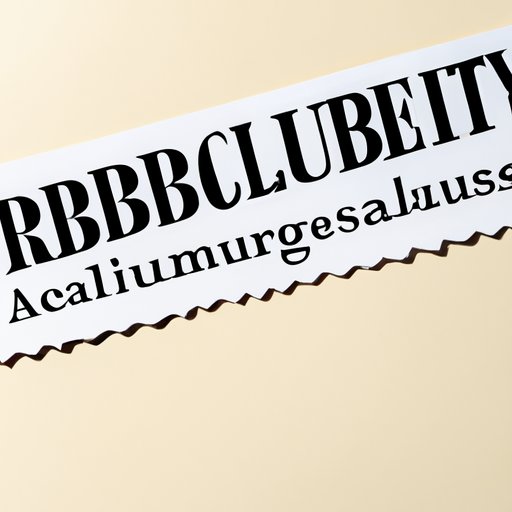Introduction
The American government system is complex, and among the three branches, the executive branch tends to be the most misunderstood. This lack of understanding can lead to confusion and skepticism about the role of the government and those in power. In this article, we will provide a comprehensive overview of the executive branch, its powers, and responsibilities to help readers better understand its impact on American society.
Understanding the Executive Branch: A Comprehensive Overview of its Powers and Responsibilities
The executive branch is one of the three branches of government in the United States and is tasked with enforcing and implementing laws. This branch is headed by the President, and its purpose is to ensure the faithful execution of congressional legislation and to manage the general operations of the federal government.
The founding fathers created a system of separation of powers to ensure that no one branch of government became too powerful. The executive branch is responsible for executing laws, while the legislative branch creates them, and the judiciary interprets them. This system of checks and balances aims to maintain a balance of power within the federal government.
The executive branch has various powers granted to it, including the power to make treaties with foreign countries, issue pardons, and command the military. Additionally, the President has the power to veto bills passed by Congress, which can be overridden by Congress with a two-thirds majority vote. This demonstrates that, while the President is not above the law, they do hold significant power within the government.
The Role of the President and the Executive Branch in American Government
The President serves as the head of the executive branch and holds a significant amount of power in American government. They are responsible for making appointments to government positions, negotiating with foreign leaders on behalf of the United States, and commanding the military. The President is also responsible for delivering the State of the Union address each year to Congress and the American people to provide updates on the state of the nation.
In addition to the President, the executive branch includes the Vice President and the Cabinet. The Vice President serves as the President of the Senate and acts as the President’s successor in case of their death or resignation. The Cabinet is a group of appointed advisors in charge of managing different areas of government, such as education, agriculture, and defense.
The President’s responsibilities are vast, and their actions have a direct impact on the functioning of the American government. They work closely with the other branches of government to maintain a balance of powers, although there can be conflicts of interest or disagreements at times.
Exploring the Checks and Balances System: The Executive Branch’s Influence on the Government
The checks and balances system is a fundamental component of American government and aims to limit the power of any one branch or individual within government. The executive branch plays a significant role in this system, with the President serving as a check on the powers of Congress and the judiciary. The President has the power to veto bills passed by Congress, which can be overridden by Congress with a two-thirds majority vote. Similarly, the President’s appointments to the Supreme Court can be reviewed and approved by Congress. This system ensures that no one person or entity has complete control over the government.
The Executive Branch: A Closer Look at its History, Structure, and Functions
The executive branch has a rich history in the United States, dating back to the establishment of the Presidency in 1789 with the inauguration of George Washington. Over the years, the branch has evolved to include various departments and agencies responsible for specific functions, such as national defense, public health, and social security.
The executive branch is structured in a hierarchical manner, with the President at the top and various agencies and departments organized underneath. Some of the agencies within the executive branch include the Department of Defense, the Department of Justice, and the Environmental Protection Agency.
These departments and agencies have various functions but work together to ensure the efficient functioning of the government. For example, the Department of Defense is responsible for ensuring national security, while the Department of Health and Human Services focuses on public health issues and the administration of social security benefits.
Federal Government 101: Getting to Know the Executive Branch and How it Works
Overall, the executive branch plays a vital role in American government and society. As citizens, it is important to understand this branch’s functions, powers, and responsibilities to participate in the democratic process fully. The President and their administration have a significant impact on American life, and their decisions affect citizens’ daily lives. To learn more about the executive branch and how it works, check out online resources such as the White House website and the Library of Congress.
Conclusion
The executive branch is an essential component of American government and plays a significant role in shaping society. Through understanding its powers, responsibilities, and structure, citizens can better comprehend how this branch works and its impact on their daily lives. We hope that this comprehensive overview of the executive branch has provided readers with a better understanding of the role and importance of this branch in the American government system.
